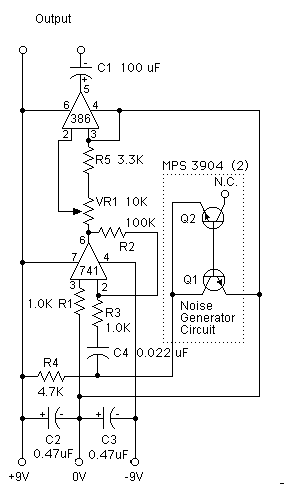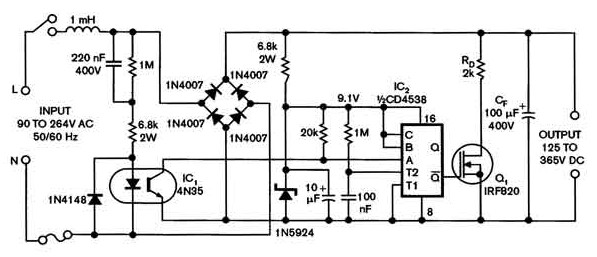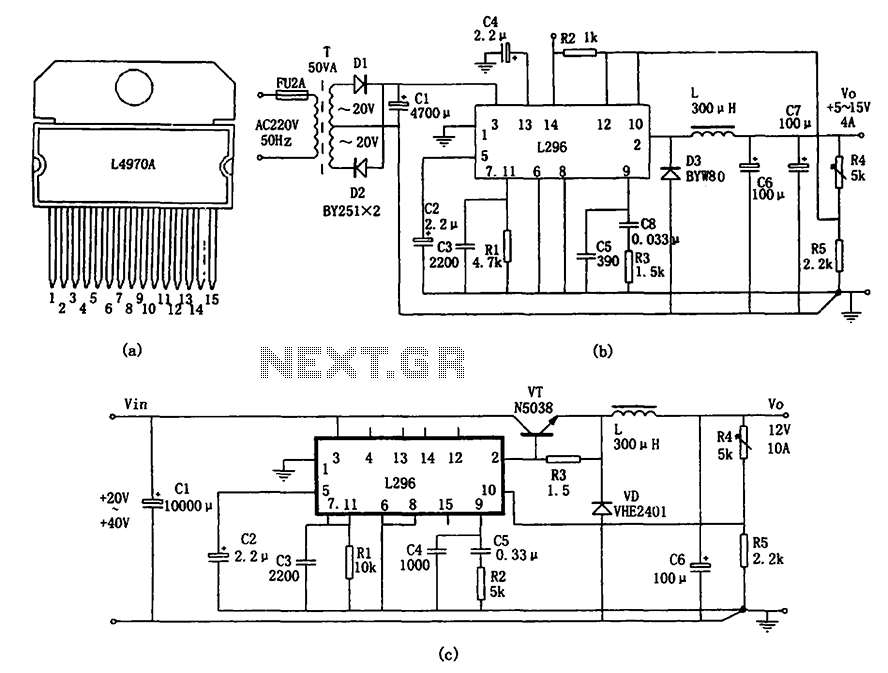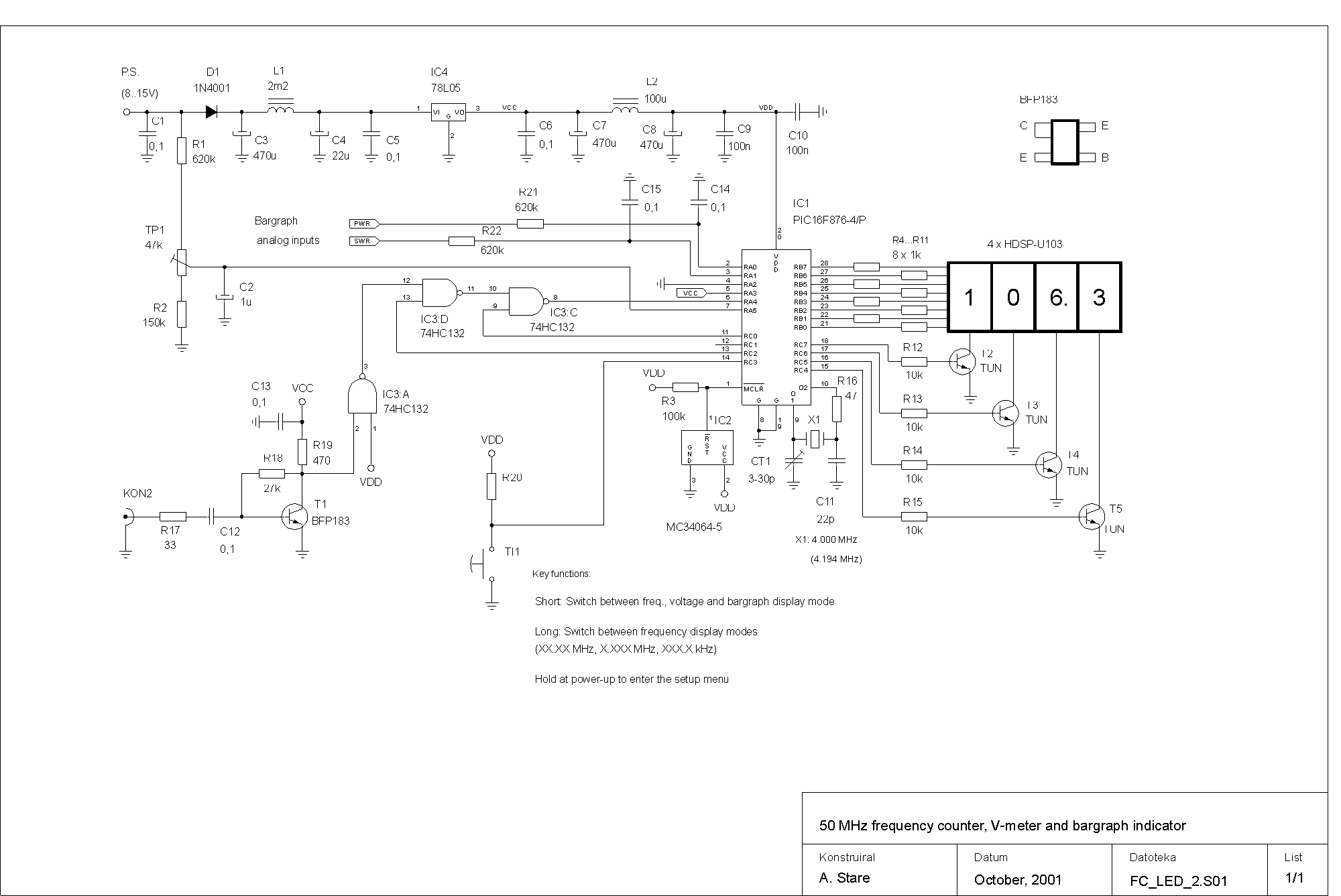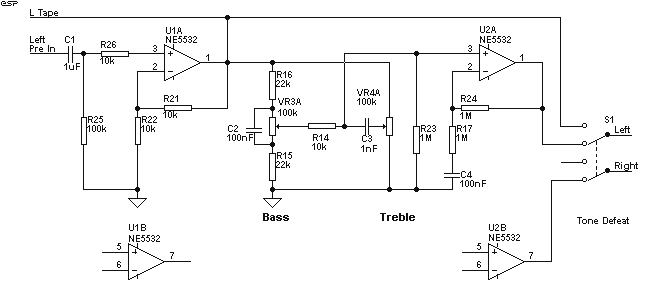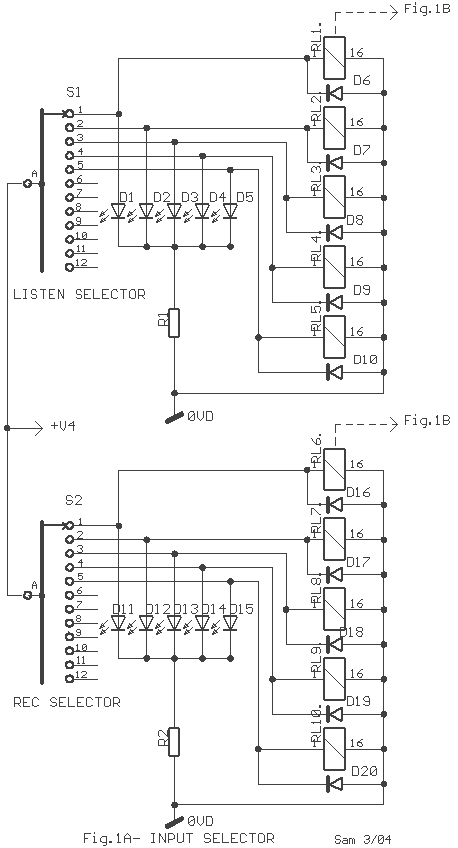
Hv440: High Voltage Ring Generator
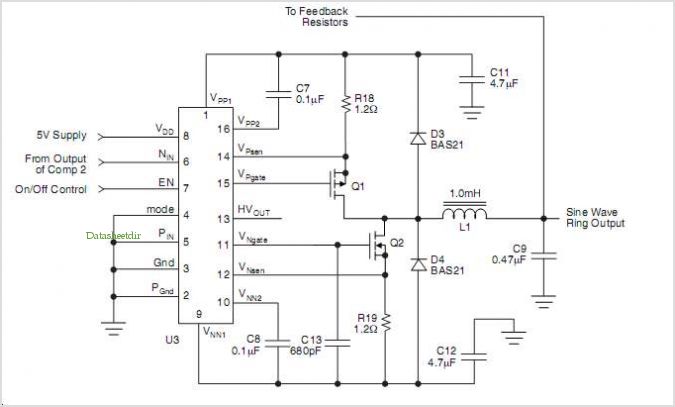
The HV739 is a monolithic single-channel, high-speed, high-voltage ultrasound transmitter pulser. This integrated, high-performance circuit is housed in a single 5x5 mm, 32-lead QFN package. The HV739 can deliver up to ±3.0 A of source and sink current to a capacitive transducer. It is designed for applications in ultrasound material inspection, non-destructive testing (NDT), and medical ultrasound imaging. Additionally, it can serve as a high-voltage driver for other piezoelectric or capacitive MEMS transducers, as well as for automated test equipment (ATE) systems and pulse signal generators. The circuitry of the HV739 comprises controller logic circuits, level translators, gate driving buffers, and a high-current, high-voltage MOSFET output stage. The output stages of each channel are engineered to provide peak output currents of ±3.0 A for pulsing, with voltage swings of up to ±80 V. Two floating 12 VDC power supplies, referenced to VPP and VNN, supply the P- and N-type power FET gate drivers. The upper limit frequency of the pulser waveform is 35 MHz, depending on the load capacitance. The HV739 can also function as a damping circuit to generate fast return-to-zero waveforms when used in conjunction with another HV739 as a pulsing circuit. It features built-in under-voltage and over-temperature protection functions. This demo board data sheet outlines how to use the HV739DB1 to generate basic high-voltage pulse waveforms as an ultrasound transmitting pulser. The HV739 circuit employs a DC coupling method in all level translators, eliminating the need for external coupling capacitors. The VPP and VNN rail voltages can be adjusted rapidly compared to high-voltage capacitor gate-coupled driving pulsers. This direct coupling topology of the gate drivers not only reduces the need for two high-voltage capacitors per channel but also simplifies PCB layout. The input stage of the HV739 includes high-speed level translators capable of operating with logic signals ranging from 1.8 to 5.0 V, optimized for 3.3 to 5.0 V. In this demo board, control logic signals are connected via a high-speed ribbon cable connector. The logic-high voltage for control signals should match the VCC voltage of the demo board, while the logic-low should reference GND. The output waveforms of the HV739DB1 can be observed using an oscilloscope by connecting the probe to the test point HVOUT and GND. A soldering jumper allows the user to select whether to connect the on-board equivalent load, which consists of a 330 pF, 200 V capacitor in parallel with a 2.5 kΩ, 1 W resistor. A coaxial cable can be utilized to connect the user's transducer, facilitating easy driving and evaluation of the HV739 transmitter pulser.
The HV739 serves as a versatile component in high-voltage applications, particularly in the field of ultrasound technology. Its compact QFN package allows for integration into space-constrained designs while maintaining high performance. The ability to deliver significant current and voltage swings makes it suitable for driving various transducer types, ensuring effective signal generation and transmission. The integrated protection features enhance reliability, safeguarding the device during operation. The design's flexibility, including the rapid adjustment of supply voltages and the elimination of external coupling capacitors, contributes to streamlined development and testing processes. The high-speed level translators enable compatibility with a range of logic levels, making the HV739 adaptable to various control systems. Overall, the HV739 is a robust solution for applications requiring precise control of high-voltage pulsing, providing essential capabilities for both medical and industrial ultrasonic applications.The HV739 is a monolithic single channel, high-speed, high voltage, ultrasound transmitter pulser. This integrated, high performance circuit is in a single, 5x5mm, 32-lead QFN package. The HV739 CAN deliver up to a ±3. 0A source and sink current to a capacitive transducer. It is designed for the ultrasound material inspection NDT and medical ultra sound imaging applications. It CAN also be used as a high voltage driver for other piezoelectric or capacitive MEMS transducers, or for ATE systems and pulse signal generators as a signal source. HV739 ½ ½s circuitry consists of controller Logic circuits, Level Translators Gate driving Buffers and a high current and high voltage MOSFET output stage.
The output stages of each channel are designed to provide peak output currents over ±3. 0A for pulsing, with up to ±80 volt swings. Two‚oating 12VDC power supplies referenced to VPP and VNN supply the P- and N-type power FET Gate drivers. The upper limit frequency of the pulser waveform is 35MHz depending on the load capacitance. The HV739 CAN also be used as a damping circuit to generate fast return-to-zero waveforms by working with another HV739 as a pulsing circuit.
It also has built-in under-voltage and over-temperature protection functions. This demo board data sheet describes how to use the HV739DB1 to generate the basic high voltage pulse wave- form as an ultrasound transmitting pulser. The HV739 circuit uses the DC coupling method in all Level Translators There are no external coupling capacitors need- ed.
The VPP and VNN rail voltages CAN be changed rather quickly, compared to a high voltage capacitor gate-coupled driving pulser. This direct coupling topology of the Gate driv- ers not only saves two high voltage capacitors per channel, but also makes the PCB layout easier.
The input stage of the HV739 has high-speed level transla- tors that are able to operate with Logic signals of 1. 8 to 5. 0V volts and are optimized at 3. 3 to 5. 0V. In this demo board, the control Logic signals are connected to a high-speed rib- bon cable connector.
The control signal logic-high voltage should be the same as the VCC voltage of the demo board, and the logic-low should be reference to GND. The HV739DB1 output waveforms CAN be displayed using an oscilloscope directly by connecting the scope probe to the test point HVOUT and GND.
The soldering jumper CAN se- lect whether or not to connect the on-board equivalent-load, a 330pF, 200V capacitor, parallel with a 2. 5k ©, 1W resistor. A coaxial cable CAN be used to connect the user`s transducer to easily drive and evaluate the HV739 transmitter pulser.
🔗 External reference
The HV739 serves as a versatile component in high-voltage applications, particularly in the field of ultrasound technology. Its compact QFN package allows for integration into space-constrained designs while maintaining high performance. The ability to deliver significant current and voltage swings makes it suitable for driving various transducer types, ensuring effective signal generation and transmission. The integrated protection features enhance reliability, safeguarding the device during operation. The design's flexibility, including the rapid adjustment of supply voltages and the elimination of external coupling capacitors, contributes to streamlined development and testing processes. The high-speed level translators enable compatibility with a range of logic levels, making the HV739 adaptable to various control systems. Overall, the HV739 is a robust solution for applications requiring precise control of high-voltage pulsing, providing essential capabilities for both medical and industrial ultrasonic applications.The HV739 is a monolithic single channel, high-speed, high voltage, ultrasound transmitter pulser. This integrated, high performance circuit is in a single, 5x5mm, 32-lead QFN package. The HV739 CAN deliver up to a ±3. 0A source and sink current to a capacitive transducer. It is designed for the ultrasound material inspection NDT and medical ultra sound imaging applications. It CAN also be used as a high voltage driver for other piezoelectric or capacitive MEMS transducers, or for ATE systems and pulse signal generators as a signal source. HV739 ½ ½s circuitry consists of controller Logic circuits, Level Translators Gate driving Buffers and a high current and high voltage MOSFET output stage.
The output stages of each channel are designed to provide peak output currents over ±3. 0A for pulsing, with up to ±80 volt swings. Two‚oating 12VDC power supplies referenced to VPP and VNN supply the P- and N-type power FET Gate drivers. The upper limit frequency of the pulser waveform is 35MHz depending on the load capacitance. The HV739 CAN also be used as a damping circuit to generate fast return-to-zero waveforms by working with another HV739 as a pulsing circuit.
It also has built-in under-voltage and over-temperature protection functions. This demo board data sheet describes how to use the HV739DB1 to generate the basic high voltage pulse wave- form as an ultrasound transmitting pulser. The HV739 circuit uses the DC coupling method in all Level Translators There are no external coupling capacitors need- ed.
The VPP and VNN rail voltages CAN be changed rather quickly, compared to a high voltage capacitor gate-coupled driving pulser. This direct coupling topology of the Gate driv- ers not only saves two high voltage capacitors per channel, but also makes the PCB layout easier.
The input stage of the HV739 has high-speed level transla- tors that are able to operate with Logic signals of 1. 8 to 5. 0V volts and are optimized at 3. 3 to 5. 0V. In this demo board, the control Logic signals are connected to a high-speed rib- bon cable connector.
The control signal logic-high voltage should be the same as the VCC voltage of the demo board, and the logic-low should be reference to GND. The HV739DB1 output waveforms CAN be displayed using an oscilloscope directly by connecting the scope probe to the test point HVOUT and GND.
The soldering jumper CAN se- lect whether or not to connect the on-board equivalent-load, a 330pF, 200V capacitor, parallel with a 2. 5k ©, 1W resistor. A coaxial cable CAN be used to connect the user`s transducer to easily drive and evaluate the HV739 transmitter pulser.
🔗 External reference
